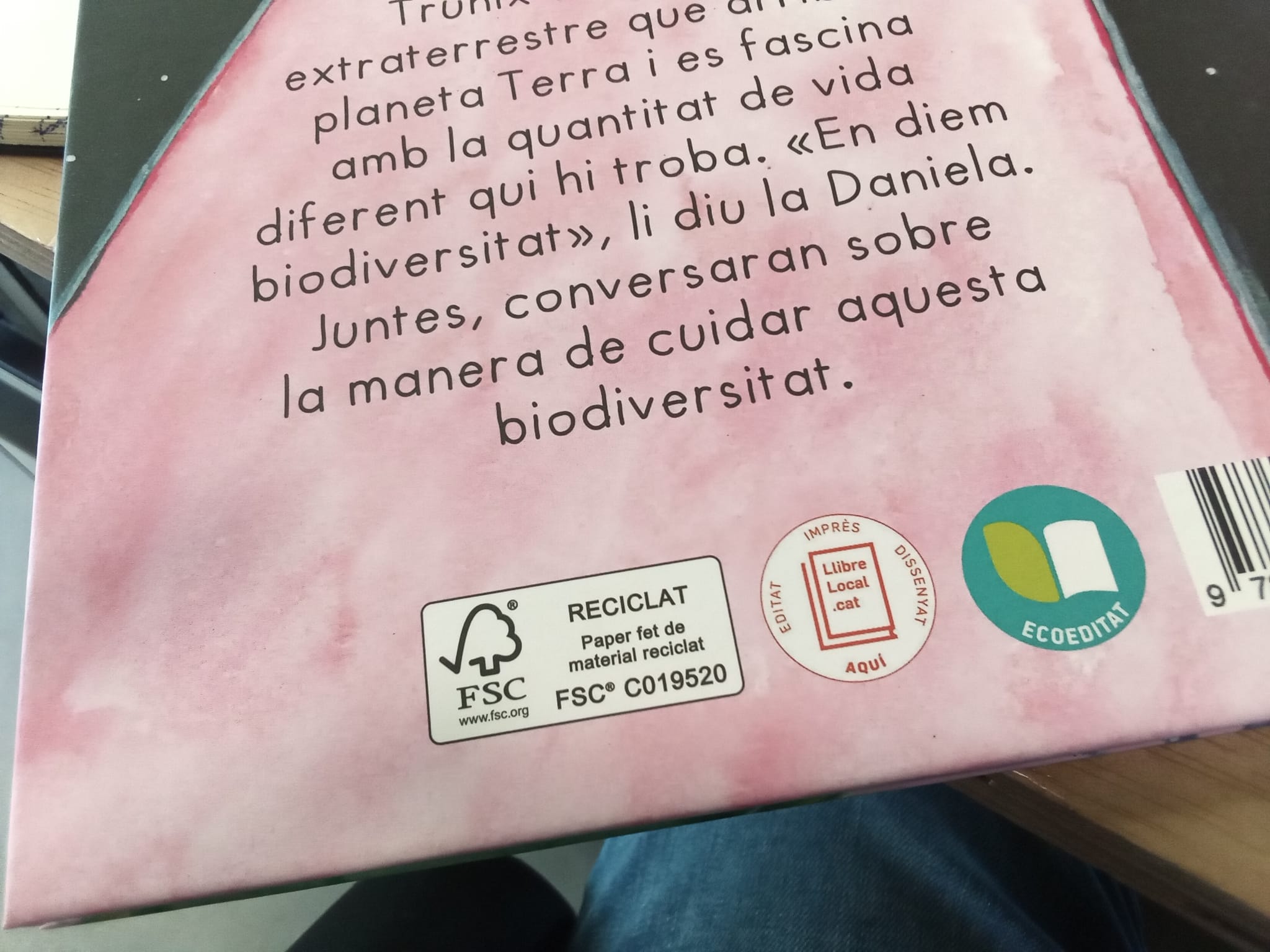Currently, many of our consumer goods are produced in Asia. Books are no exception. If we are committed to local production and trade in most sectors, why not apply the same criteria to the printing industry? This is where the term “eco-edition” was born, a concept that is gaining traction, but not without its challenges. Graphispag will provide answers for its implementation in the graphics sector.
To sum it up, eco-publishing is an innovative way of managing publications according to sustainability criteria in order to minimise the negative environmental effects of the publishing process. Eco-publishing, therefore, involves the adoption of best practices and environmentally friendly techniques throughout the product life cycle. This includes everything from design and formatting to distribution, including the type of raw materials used and the printing and binding processes.
Pol·len edicions, which was born in 2011 as a laboratory to develop projects linked to eco-publishing after observing the strong impact of printing on the environment, is part of this effort. Already in its early days, the publishing house promoted the LIFE+ Greening Books project, financed by the European Commission together with the LEITAT Technological Centre. This project carried out a Life Cycle Analysis on the offset printed paper and developed a carbon calculator bookDAPer.cat, a software that allows publishers to create their own eco-labels. These labels, included in the publications, provide readers with information on the environmental impact of their reading.

Image courtesy of Pol·len edicions
12 criteria for eco-publishing
Jordi Panyella is editor of Pol·len edicions and an advocate of the development of sustainable processes and methodologies applied to book production. The eco-publishing expert explains how they have been defining 12 criteria in relation to eco-publishing, of which the first three are fundamental, while the remaining nine are decisions to be taken into account when producing a book:
- Local production: books must be printed in their distribution area. Distribution accounts for 16% of the environmental impact of books.
- Utilisation of 100% recycled and FSC or FSC-certified paper, as a guarantee of sustainable forest management. Paper accounts for almost 50% of the environmental impact of books.
- Calculation of the carbon footprint of books. A reader of a book has the right to know the environmental impact caused by the manufacture of the product in their hands.
- Ecodesign. This concept seeks to minimise environmental impact right from the design stage. Although this phase generates 9.6% of the environmental impact of book production, it is an important moment during decision-making that can contribute to reducing this impact.
- Environmental management in organisations. Every activity generates an environmental impact. The important thing is to detect it, implement management measures and make commitments to reduce it. In this sense, there are environmental management systems, such as EMAS and ISO:14001 certification, which are particularly useful for organisations. Reduced impact and use of fewer resources lead to greater savings.
- Use of inks and toners. Although it represents a small part of the volume and weight of books, inks are their most polluting and toxic element, and there are recommendations to be followed for both offset and digital systems.
- Offset printing or digital printing. According to the Life Cycle Analysis of printing on digital machinery, this system generates a reduction in environmental impact. However, it will depend on the type of product to be manufactured. For long print runs—more than 500—and books with a lifespan of at least 35 years, the offset system offers lower-impact results.
- Reading on electronic devices. What is important is that, as in the case of paper books, systems for calculating, minimising and communicating the environmental impact must also be put in place in this case.
- Plates and finishes. In the offset system, stochastic screen plates generate a saving of 10.6% in ink usage. Finishing includes both binding and the reuse of surplus paper or other products.
- Print runs. It is important to manage print runs so as not to generate unnecessary stock. Mechanisms such as subscriptions to collections or publishers make it possible to know with greater accuracy the number of copies that need to be printed. Through crowdfunding or micro-patronage platforms such as Verkami.com, it is possible to know the interest in a work before publishing it and, in the best case scenario, to know how many copies need to be printed to meet the initial demand.
- Work licences and free software. Using less restrictive licences reduces the environmental impact of the book in the sense that by making it easier to copy, you are extending its useful life. In addition, Also, free software offers greater durability to the computers used for editing, designing and formatting books.
- Energy. Much of the environmental impact of book production comes from the energy consumption of organisations. Energy use must come from renewable sources.

Image courtesy of Pol·len edicions
Cristina Benavides, Graphispag contributor




